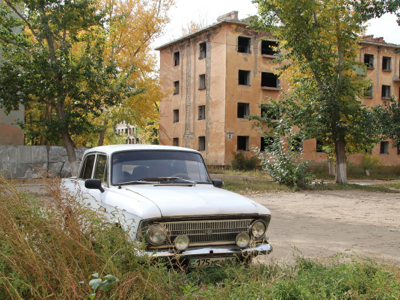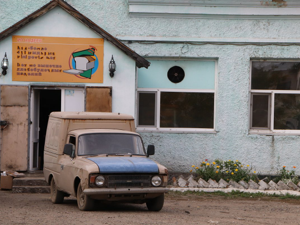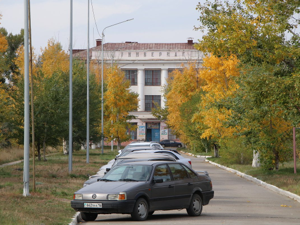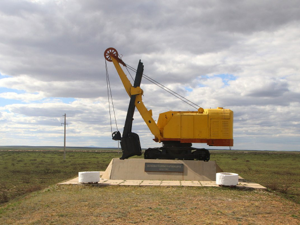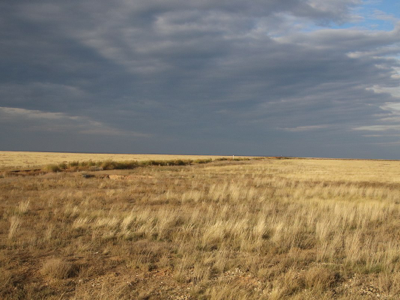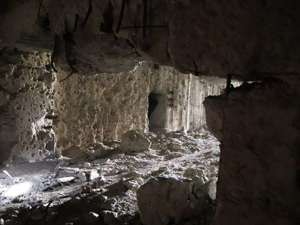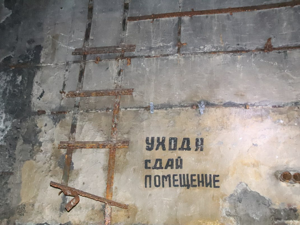Kyrgyzstan and Tajikistan 2018
Kyrgyzstan and Tajikistan 2018

Kazakhstan 2018
It has been another long day, but a fascinating one. After breakfast in our hotel, most of us got together for a walking tour of Kurchatov. It is a very interesting town. In its heyday, during the times of Soviet nuclear testing, the town’s population was about 45,000 people. When the testing stopped with the breakup of the USSR, 90% of that number left the town, usually just leaving their key in the door for anyone else who wanted to live there. It was said that anyone who wanted a place to live could just choose a flat, turn the key and live there for free. Later, when law and order became more established, those people who had obtained their flat for free and who had made improvements or maintained them well were given formal title to the property.
When the military officers and soldiers left Kurchatov, they wisely took all their ammunition with them. However, they left their weapons behind, and for several years, local youths played mock battles in the streets with empty but real machine guns.
The population of Kurchatov has climbed from its post-independence low, and now totals about 15,000 to 17,000 people. The influx of people has been a combination of people moving in from rural areas, some Kazakhs returning from overseas to their homeland, and people required to support the revitalisation of the town’s nuclear industry. The nuclear centre alone now employs about 300 people.
Our walk took us by all the scenic spots of Kurchatov (and a much larger number of derelict houses and buildings under demolition). In the town’s central square, a large statue of Igor Kurchatov looked suspiciously like a standard statue of Lenin with a new head, the head being a slightly different colour and more shiny than the rest of the statue. A lovely classical double-storeyed light blue home with white trimmings was once the home of the feared Lavrentiy Beria (chief of the KGB who had earlier worked as the scientist in charge of the atomic program in Kurchatov). Interestingly, the house is now a Russian Orthodox church.
Other Kurchatov landmarks we saw included the town’s mosque, the war memorial, the bakery, the general store, the (disused I think) high school, and a small park that featured a miniature copy of Astana’s Bayterek Tower.
At 10:30am, we were joined by an official from the Institute of Atomic Energy who accompanied us to the main destination for the day – back into The Polygon to see Atomic Lake.
It was a 135 kilometre drive from Kurchatov to Atomic Lake, and slow travel on rough, poor roads (though a little better than yesterday’s) meant the journey took five hours. We were told (and geiger counters confirmed) that the area was safe for travel, but strange surface patterns from time to time confirmed that much of the territory we covered had been used for underground nuclear testing over the years. We did make a few stops on the way – one stop to use ‘traditional toilets’ (i.e. the treeless, open grassland of the Kazakh steppes), one stop to admire a large coal excavator that has incongruously been made into a roadside monument, and a major stop at the bunker that was used to trigger the explosion that created Atomic Lake.
The bunker was extraordinary and I would have liked to have learned more about its design and its history. Clearly built to withstand the blast that created Atomic Lake about 15 kilometres away, the bunker the roof was a layer of reinforced concrete that I would estimate to be between three and four metres thick. The “door” was a three metre high one metre thick wheel of solid concrete wrapped in steel that was rolled across the bunker’s opening to seal off the interior. The dark interior required a torch to explore, and is now empty apart from falling lumps of concrete and rock. It was all very ‘post-apocalyptic’.
The bunker also marked the spot where we had to put on our protective hooded overalls, boots and gloves, but before doing so, we had a light picnic lunch of bread with salami, cheese and tomatoes. We left the bunker at 2:50pm and finally arrived at Atomic Lake at 3:25pm.
Atomic Lake was created on 15th January 1965 when the Soviets exploded a 140 kiloton nuclear bomb at a depth underground of 178 metres in order to create a crater that would become filled with water. The site of the explosion was the confluence of the Shagan and Ashchisu Rivers, and the explosion resulted in a crater 430 metres in diameter with a surrounding ridge rising up to 35 metres above the surrounding plain. Large rocks were thrown up into the air, landing about half a kilometre away from the blast site.
The idea was that this ‘industrial’ use of nuclear power would produce a lake that would become a water storage reservoir for surrounding farmland. After the atomic blast, smaller blasts using ordinary dynamite opened a channel from the rivers into the crater, which filled in a matter of a day or so, and today Atomic Lake holds 10.3 million cubic litres of water. Atomic Lake is thus the world’s first and only use of industrial nuclear weapons.
When I arrived today, I was surprised to see several fishermen, some on the lake’s shores and others in a small fishing boat towards the centre of the lake. Interestingly, none of them were wearing protective anti-radiation gear like us. Apparently the water is not radioactive, although the sludge on the bottom of the lake is radioactive; however, as the lake is 180 metres deep, this is not seen as a problem. It is said that the fish caught in Atomic Lake are safe to eat (although I’ve been sticking to others foods while in the area).
Like yesterday, the weather was somewhat frustrating during the visit to Atomic Lake. We had been driving through glorious sunshine for most of the trip to the lake. The sunshine disappeared a couple of minutes after our arrival, and for most of the hour or so we remained there, we were under a very thick, dark grey cloud. The cloud finally cleared just as we were leaving, and we enjoyed a nice, sunny journey away from the lake, at least until the rain began shortly before our arrival back in Kurchatov. With fewer stops on the return journey, the 135 kilometre trip took just three hours, of which 25 minutes was spent waiting for trains to pass through the level crossing on the southern edge of Kurchatov.
Dinner was arranged at our hotel, and was great. It consisted of duck and lamb shashliks cooked on the open barbecue in the courtyard of our hotel overlooking the river. Being dark, we stood around in the headlights of a small car that was brought to the area for the purpose, and in the damp conditions of the steadily drizzling rain, it seemed a very appropriate way to finish a visit to a Soviet nuclear testing zone.

Day 12
Kurchatov and Atomic Lake
Sunday
23 September 2018




